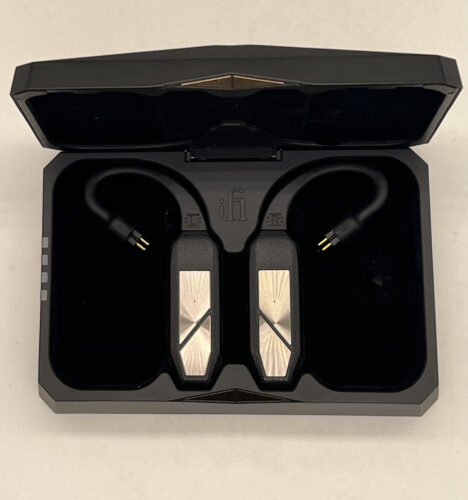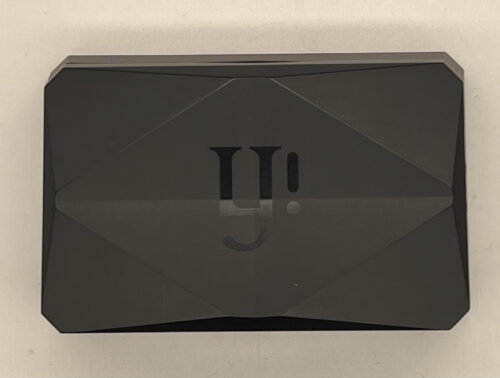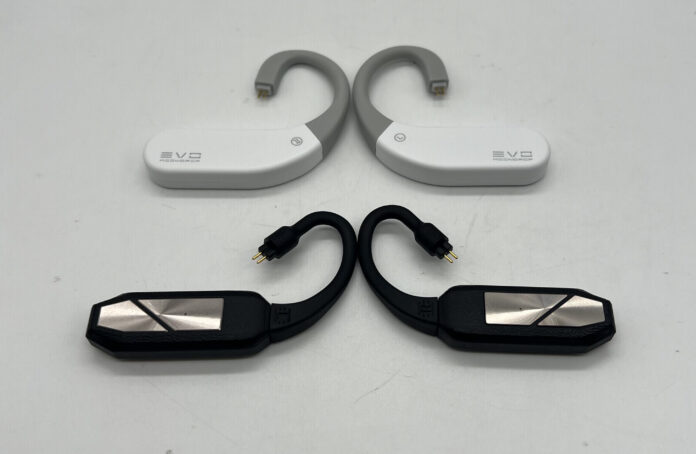As an audiophile always on the lookout for innovative audio solutions, I recently had the opportunity to test two fascinating wearable Bluetooth DAC/Amps: the Moondrop Evo and the iFi Go Pod. Both devices aim to transform your IEMs into True Wireless Stereo (TWS) earbuds, offering a compelling blend of convenience and high-quality audio. In this comparison review, I’ll share my experiences with both devices, covering their connectivity, design, audio performance, and overall value proposition.
DAC Connectivity and Battery Life
The Moondrop Evo boasts Bluetooth 5.2 connectivity with a claimed range of 15 meters (49.2 feet). However, in my real-world testing, I found this claim to be somewhat exaggerated. The connection began to drop out at around 6 meters (20 feet), making it more suitable for desk use or keeping your device close by. Despite this limitation, I found the Evo to be quite usable for everyday scenarios.

The Evo supports a wide range of codecs, including aptX Adaptive, aptX TWS+, aptX HD, aptX, AAC, and SBC. This comprehensive codec support allowed me to enjoy the full clarity of lossless streaming from services like Tidal and Roon. However, I did note the absence of Dolby Atmos compatibility, which would have been a welcome addition.
Battery life on the Evo impressed me. After two hours of use, I barely noticed a dent in the playtime. The charging case, while bulky, provides excellent protection for your IEMs and extends the overall battery life significantly.
In contrast, the iFi Go Pod also features Bluetooth 5.2 but utilizes the Qualcomm QCC 5100 chip. I found its range to be noticeably better than the Evo’s, making it more versatile for moving around. The Go Pod supports an even wider array of codecs, adding LDAC and LHDC/HWA to the mix. This expansive codec support ensures fantastic audio quality across various devices and streaming services.

The Go Pod’s battery life is equally impressive, offering about 7 hours of playback on a single charge, with the case providing an additional 30 hours. I appreciated the useful battery life display on the case, which helped me keep track of remaining power.
Design and Fit
The Moondrop Evo’s design is significantly bulky, but I found it provided a secure fit that didn’t impact my IEM seal. The device clasps noticeably around the ear, which might not be ideal for everyone, especially those with smaller ears. The rubber material is a little stiff, meaning it took a while to form around my ear. While I found it comfortable for casual listening and walking around, it’s not the best choice for workouts.
The Evo’s touch controls work well, and I appreciated the inclusion of ENC dual mics for great call quality. However, the bulky charging case, while protective, is far from pocket-friendly. You’ll definitely need a bag or tote to carry this around comfortably.

The iFi Go Pod, on the other hand, weighs just 12 grams, making it significantly more comfortable to wear. I found its around-the-ear fit more flexible than the Evo’s, conforming better to my ear shape. After extended use, I barely noticed I was wearing it, feeling more like a slightly thicker IEM cable than a separate device.
The Go Pod’s IPX5 rating adds peace of mind for light water exposure, though I’d still be cautious about using expensive IEMs during intense workouts. The included adapters for both 2-pin and MMCX connections greatly expand its compatibility with various IEMs.
Like the Evo, the Go Pod’s case is quite large, but I found it more manageable overall. The built-in mic with Qualcomm noise suppression performed admirably during calls.
Audio Quality
Turning to the all-important factor of audio quality, both DAC/Amps impressed me, albeit with distinct characteristics. I used the 64 Audio U18t, Nostalgia Audio Camelot, and Moondrop Aria IEMs in my testing.

The Moondrop Evo delivers clear audio with minimal distortion. I noticed a slight drop in bass and presence compared to a wired connection, but the overall volume and clarity were excellent. The Evo adds a warm, slightly V-shaped character to the sound, which I found particularly enjoyable with brighter IEMs.
Listening to “Synapse” by Linea Aspera, I appreciated the Evo’s handling of the track’s layered elements. The sharp synths mixed well with the reverb-heavy vocals, creating a natural and transparent soundstage. However, I did notice that trailing sounds were slightly shortened compared to a wired connection.
Moving to heavier genres, I played Morbid Angel’s “Blessed are the Sick” album. The Evo DAC added a nice character to the boosted guitars and bass, making them less piercing and more enjoyable. If you’re easily fatigued by highs, you’ll likely appreciate the color the Evo adds to the sound.


For a change of pace, I listened to “Loie” by Ike Quebec. The Evo’s warm and detailed sound beautifully supported the track’s haunting organ and vocals. The layered Van Gelder Studios recording came through with distinct fullness, showcasing excellent low-end detail.
However, when I tested the Evo with Brotherhood’s “Till Death” album, I found its limitations. The booming guitars were a bit too much for the unit to handle, resulting in some muddiness. While the drums retained enough sharpness, I wished for more character in the bombastic rhythm section.
Switching to the iFi Go Pod, I immediately noticed its flatter, more neutral sound signature. The Go Pod offers clear audio reproduction with very low distortion. I perceived slightly less clarity in the 2kHz – 4kHz treble range compared to the Evo, which can help tame harshness in some IEMs.
Revisiting “Synapse” by Linea Aspera, the Go Pod provided more clarity in voices and a more present midrange. I also noticed a wider soundstage that reproduced reverb more accurately.

With Freddie Roach’s “Loie,” the Go Pod’s flatter sound showcased the mix’s excellence. While bass was less prominent than with the Evo, I appreciated the more distinct, textured sound. Solos came through with brighter clarity, and cymbals sounded sharper and clearer without becoming fatiguing.
Returning to Morbid Angel’s “Blessed are the Sick,” I found the guitars lacked the same growling bite as with the Evo, but they made up for it with improved layering and body. Feedback and string noise details are louder on the evo as well. The drums pushed through the mix more clearly, with a faster, cleaner attack on the snare.

Finally, with Brotherhood’s “Till Death,” the Go Pod truly shined. Its character paired excellently with the album’s bass-heavy mix. The fuzzy, saturated guitars displayed more presence, and the rumbling low-end was a perfect match for this DAC. I also appreciated how the cymbals separated more clearly from the guitar and bass sounds.
Value and Conclusion
After extensive testing, I found both the Moondrop Evo and iFi Go Pod to be excellent performers in their respective price brackets.
The Moondrop Evo offers impressive sound quality and features at a more budget-friendly price point. While its connectivity range and bulky design may be drawbacks for some, its warm sound signature and compatibility with a wide range of IEMs make it an excellent choice for those looking to dip their toes into the world of wireless DAC/Amps.
The iFi Go Pod, with its $399 price tag, caters more to the high-end consumer with multiple pairs of IEMs. Its superior connectivity, more neutral sound signature, and wider codec support justify the premium to a degree. However, at a price point that exceeds many TWS earbuds, it may be a harder sell for casual listeners.
Both devices successfully bridge the gap between wired audio quality and wireless convenience. The choice between them will largely depend on your budget, preferred sound signature, and how much you value the additional features of the Go Pod.
As for me, I found both DAC/Amps to be valuable additions to my audio arsenal, each serving different purposes. Despite this, it’s hard to consider paying around four times as much for the Go Pod when the Evo does about 80% of what they offer. I’d still suggest the Go Pods for use with high-end IEMs and DAPs.
In the end, both the Moondrop Evo and iFi Go Pod prove that the future of personal audio is bright, offering audiophiles the freedom to enjoy their favorite IEMs wirelessly without significant compromises in sound quality. Whether you’re a budget-conscious listener or a discerning audiophile, these devices offer compelling options to elevate your wireless listening experience.
Get the Moondrop EVO and iFi Go Pod at Audio 46
MAJORHIFI may receive commissions from retail offers.








